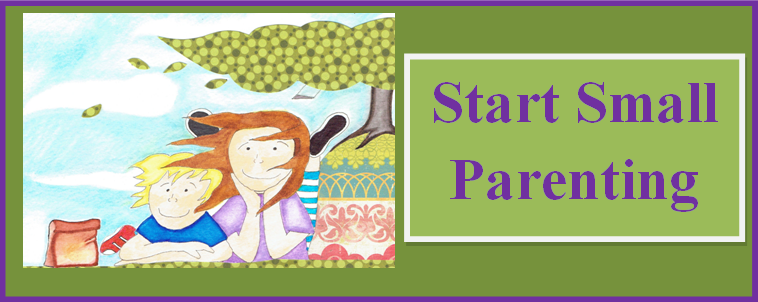
If the child cries for what they want, the answer is always “No.”
Always? Yep. Consistency is key with this tool. If you’ve ever found
yourself giving into a demand made by your child just to stop the crying, this is a good one. We instilled this practice early on in our parenting and we avoided so many of those kinds of struggles with my son.
I was in the grocery store yesterday. A frazzled mother was trying to quiet her flailing, screaming toddler.
“Moooommmmy!” the boy wailed. “Puuuufffs.”
The mom tried to pick him up off the floor and he kicked out in her direction.
“Stop it, Jonah. Stop it right now!” Her tone carried shame and embarrassment. After several unsuccessful attempts to lift him, she hurried to the end of the aisle, grabbed a pink and turquoise box of a food “product” that didn’t resemble real food, and put it in her son’s hands. He immediately stopped crying, a look of absolute satisfaction on his face. I had just witnessed a battle. I don’t think there were any winners.
If you answer “no” to a young child’s request, they might cry or tantrum to try to get you to change your mind, just as Jonah did. From the first time this happens, you get to be CLEAR. Crying for something = NO. There is no gray “Maybe,” or “Alright, alright,” just to try stop the behavior. Anything but a “no” tells the child that crying is the expected behavior.
The EXPECTED BEHAVIOR is for the child to trust the parent’s answer.
THE BENEFIT
Many parents I’ve talked with felt that they were being manipulated by their child but didn’t know what to do about it. Helpless, Powerless, Not in Charge, Being a Bad Parent for giving the child what they really shouldn’t have – these are all comments I’ve heard. It may seem unbelievable that your child can learn this new behavior, but they can. And quickly. It saves you hours of having to be “patient” while the child cries it out or having to give in to their demands when you don’t want to.
THE PRACTICE
You can set the stage for this practice by taking your child to the grocery store. Since this is a practice and you are a wise adult, know that your child will most likely ask for something you will need to say no to. So – you plan ahead. This is not a trip about getting the groceries. Only you know that. Here are the steps to follow.
1. Before going shopping, use the Rule of Three. First, tell your child in the morning that you will go to the store together. There are many things to buy and your child will want some things they can’t have. Together, you will find something you can say yes to. Be very CLEAR: If they cry when you say no, you will leave the store. (This is the Educational Consequence.) Secondly, tell them again as you get in the car. Third, tell them one more time as they climb into the grocery cart.
2. SHOP as you normally would, filling the cart with a few items.
3. The child ASKS for ________ (a bag of jumbo purple/green/yellow chemically colored marshmallows, for example.)
4. YOU SAY NO. You do not say, “Another day” or “Sugar will rot your teeth” or “I would be a bad parent if I bought you those.” Any answer but no invites argument.
5. You then use your REMINDER. ie., “Remember our talk. There are other foods I can say yes to. I can say yes to (fill in the blank) those organic fruit chews.”
6. Your child will either cooperate OR begin to cry (scream, kick . . .)
7. If the child cries, you calmly pick them up and walk out of the store.
Here, you have fabricated the event so you can practice while you are calm and focused. It can be hard to implement this if you are rushing through a shopping trip with a cart full of food you must purchase in order to make a dinner that you should already be home preparing. Kids have a built-in radar for stress and seem to know just when to catch you when you are most compromised to ask for something they shouldn’t have.
After several consistent experiences of this, children learn their crying strategy doesn’t work. If your child tries to repeat their tactic, you will be clear on the theme and able to provide consistency with the above reaction.
I’m Drained
What if a child fully resists the parent’s voice? What if behaviors of parent and child turn into a battle of wills, the child is crying for what they want or not listening, and the parent is exhausted trying to change their child’s behavior?
The parent can use “I’m drained” to give the child information on the effects of their behavior.
“This behavior is draining my energy. I have just enough energy to…[fix dinner, fold laundry, feed the dog, etc.]…I am too tired to go to the park like we planned [play Legos, read books, etc.]”
“What will give me energy is you responding to my voice on the first time.”
“When you ask instead of cry, I have lots of energy for playing together.”
This serves to give the child feedback on their actions and allows them to be empowered toward change in a direction that works for everyone.
How does saying no work in your family? Please SHARE!


I honestly don’t remember if I ever said “yes” to my children when they were crying. Not in the grocery store, but in the middle of the night, probably so… But, Annie, you have a great idea. Practice things when you are calm. A small child is WAAAAY more persistent than a busy mom or dad, and said child is thinking only about one thing. The average mom or dad is probably thinking about 50 things most of the time.
But, I thought I’d add a caution. Pay attention to what you already know about your children. If you have children under 6 you probably know when they’re typically tired and hungry. Don’t set them –and you— up for an outburst by shopping or doing public things at those times. The only time I ever had to take my daughter out of a restaurant was when my Dad (as visiting Grandpa) wanted to go out to lunch. I (young mom) said, Samantha will be too tired after preschool. She always sleeps for 2 hours after preschool. He said, oh come on, I’m only here for 2 days, let’s go out, Terry (young husband) will enjoy it. Well, it was dreadful. I don’t remember what she did, but I had to stay outside with her while everyone else ate. I knew better!! I felt terribly sad that I had allowed that to happen.
Great words of caution, Heather. We know for ourselves how important it is to have our basic needs met. If we look at the grocery store example as the opportunity for a “teaching moment”, we want our child to be as present to the experience as possible – not in need of a nap, snack, some exercise, etc. As a teacher, you know how important Abraham Maslow’s Heirarchy of Needs is to learning. The most basic needs which come before all others are biological and physiological needs. It is so wise, as you say, to pay attention to what you already know about your children. Follow their cues and help them meet their needs before embarking on a teaching moment. Thanks for your comment!
When I was a kid “no” was the standard answer. I don’t think my parents even thought about it – certainly didn’t feel bad about saying it. It just came out: Question/Request … no. I remember many great nos in my past.
I do a lot of Yes as a parent. It’s how I get to see where my son’s interests go. I remember the feeling of being shut down and I’m choosing to use that word when I really have a reason to. And crying for something? Yeah… perfect time for a ‘no’.
Yes! This is one of the toughest ones! Your suggestion to plan ahead with the child is an absolute must: one weak link, one ‘oh, all right’, is guaranteed sabotage. Intermittent reinforcement is what feeds Vegas, and it should stay in Vegas.
I used to shot down their requests with a straight “no” due to our laziness! But found that over time, the word “no” losing its effectiveness and often leads to a fight. Toddlers behavior are driven by emotions than logic, so reasoning with them do not work for me. Now I’ve learnt to use other tactics dealing with them like distraction or framing method.